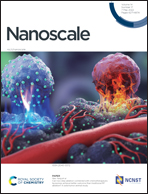Can two-step ablation combined with chemotherapeutic liposomes achieve better outcome than traditional RF ablation? A solid tumor animal study†‡
Abstract
Objectives: To determine whether two-step ablation using sequential low and high temperature heating can achieve improved outcomes in animal tumor models when combined with chemotherapeutic liposomes (LP). Materials and methods: Balb/c mice bearing 4T1 tumor received paclitaxel-loaded liposomes followed 24 h later by either traditional RFA (70 °C, 5 min) or a low temperature RFA (45 °C, 5 min), or two-step RFA (45 °C 2 min + 70 °C 3 min). Intratumoral drug accumulation and bio-distribution in major organs were evaluated. Periablational drug penetration was evaluated by pathologic staining and the intratumoral interstitial fluid pressure (IFP) was measured directly. For long-term outcomes, mice bearing 4T1 or H22 tumors were randomized into five groups (n = 8 per group): control (no treatment), RFA alone, LP + RFA (45 °C), LP + RFA (70 °C) and LP + RFA (45 + 70 °C). End-point survivals were compared among the different groups. Results: The greater intratumoral drug accumulation (3.35 ± 0.32 vs. 3.79 ± 0.29 × 108 phot/cm2/s at 24 h, p = 0.09), deeper periablational drug penetration (45.7 ± 5.0 vs. 1.6 ± 0.5, p < 0.001), and reduced off-target drug deposition in major organs (liver 96.1 ± 31.6 vs. 47.4 ± 1.5 × 106 phot/cm2/s, p < 0.001) were found when combined with RFA (45 °C) compared to drug alone. For long-term outcomes, 4T1 tumor growth rates for LP + two-step RFA (45 + 70 °C) were significantly slower than those of LP + RFA (70 °C), LP + RFA (45 °C), and RFA alone (P < 0.01 for all comparisons). End point survival for LP + RFA (45 + 70 °C) was also longer than that for LP + RFA (70 °C) (median 16 vs. 10 days, p = 0.003) or LP + RFA 45 °C (11 days, p = 0.009) and RFA alone (8.3 days, p < 0.001) in 4T1 tumor models. The intratumoral IFP after RFA (45 °C) was significantly lower than baseline RFA (3.3 ± 0.8 vs. 19.2 ± 3.1 mmHg, p < 0.001), but was not measurable after RFA (70 °C). Conclusions: A two-step ablation combined with chemotherapeutic liposomes can achieve better survival benefit compared to traditional RFA in animal models.



 Please wait while we load your content...
Please wait while we load your content...